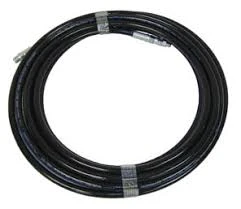vacuum brake booster hose
Understanding the Vacuum Brake Booster Hose
The vacuum brake booster hose is a critical component in modern vehicles, playing a significant role in enhancing braking efficiency and safety. This article will explore the function, importance, and maintenance of the vacuum brake booster hose, ensuring a comprehensive understanding of its role in the braking system.
What is a Vacuum Brake Booster?
Before delving into the vacuum brake booster hose, it's essential to understand what a vacuum brake booster is. The vacuum brake booster is a device that uses vacuum pressure to amplify the force a driver exerts on the brake pedal. When the driver presses the brake pedal, a diaphragm inside the booster moves, creating a vacuum that assists in pushing the master cylinder, resulting in more effective braking power. This mechanism not only improves the braking performance but also reduces the physical effort required by the driver.
Role of the Vacuum Brake Booster Hose
The vacuum brake booster hose connects the brake booster to the engine's intake manifold, allowing vacuum pressure to flow into the booster. This hose is typically made of durable rubber or reinforced material designed to withstand high temperatures and pressures.
The vacuum brake booster hose serves several critical functions
1. Vacuum Supply The primary role of this hose is to deliver a consistent supply of vacuum pressure from the engine to the brake booster. This pressure is essential for the proper functioning of the braking system.
2. Preventing Air Leaks A well-functioning vacuum hose prevents the ingress of air into the brake booster system. Any leaks in the hose can disrupt the vacuum supply, leading to reduced braking efficiency and, in extreme cases, brake failure.
3. Durability and Flexibility The vacuum brake booster hose must remain flexible enough to accommodate engine movement. Simultaneously, it must be durable enough to resist wear, heat, and various environmental conditions.
Signs of a Failing Vacuum Brake Booster Hose
Over time, the vacuum brake booster hose can wear out, leading to potential issues within the braking system. Here are some common signs indicating that it may be time to inspect or replace the hose
vacuum brake booster hose

- Hissing Sounds If you notice a hissing sound when you press the brake pedal, it could indicate a leak in the vacuum hose. This sound generally signifies that air is entering the system, which can compromise brake effectiveness.
- Hard Brake Pedal A brake pedal that feels excessively hard or requires significantly more force to engage could be a sign of insufficient vacuum pressure. This is often due to a failing booster or a leak in the hose.
- Braking Delays If there is a noticeable delay between pressing the pedal and the brakes engaging, it may indicate an issue with the vacuum supply.
- Check Engine Light In some cases, a malfunctioning vacuum brake booster hose can trigger the check engine light on your dashboard. This can be due to pressure differences sensed by the vehicle’s engine control unit (ECU).
Maintaining Your Vacuum Brake Booster Hose
Regular maintenance of your vehicle’s braking system can help catch issues with the vacuum brake booster hose before they become severe. Here are some tips to ensure its longevity
1. Regular Inspections During routine vehicle inspections, have the vacuum brake booster hose checked for any signs of wear, such as cracks, bulges, or fraying.
2. Replace Damaged Hoses If you notice any damage or signs of wear on the hose, it’s crucial to replace it immediately to maintain safe braking performance.
3. Keep the Engine Clean A clean engine bay can reduce the chances of contaminants building up around the hose, which can lead to premature wear.
4. Follow Manufacturer Guidelines Always refer to your vehicle’s manual for specific maintenance schedules and recommendations regarding the brake system.
Conclusion
The vacuum brake booster hose is a vital component for effective vehicle braking. Understanding its function and maintaining its integrity is crucial for ensuring safety on the road. By being aware of the signs of failure and taking steps to maintain the braking system, drivers can enjoy a safe and reliable driving experience. Regular vehicle maintenance is key to preventing costly repairs and ensuring the longevity of your vehicle's braking system.
-
Understanding Power Steering Tube ReplacementNewsApr.16,2025
-
SAE J1401 Brake Hoses: A Critical Component for Vehicle SafetyNewsApr.16,2025
-
Pipe Couplings: Essential Components for Effective Plumbing and Fluid SystemsNewsApr.16,2025
-
Hose Guard Solutions for Every NeedNewsApr.16,2025
-
Effective Spiral Protection SolutionsNewsApr.16,2025
-
Effective Sewer Cleaning SolutionsNewsApr.16,2025

